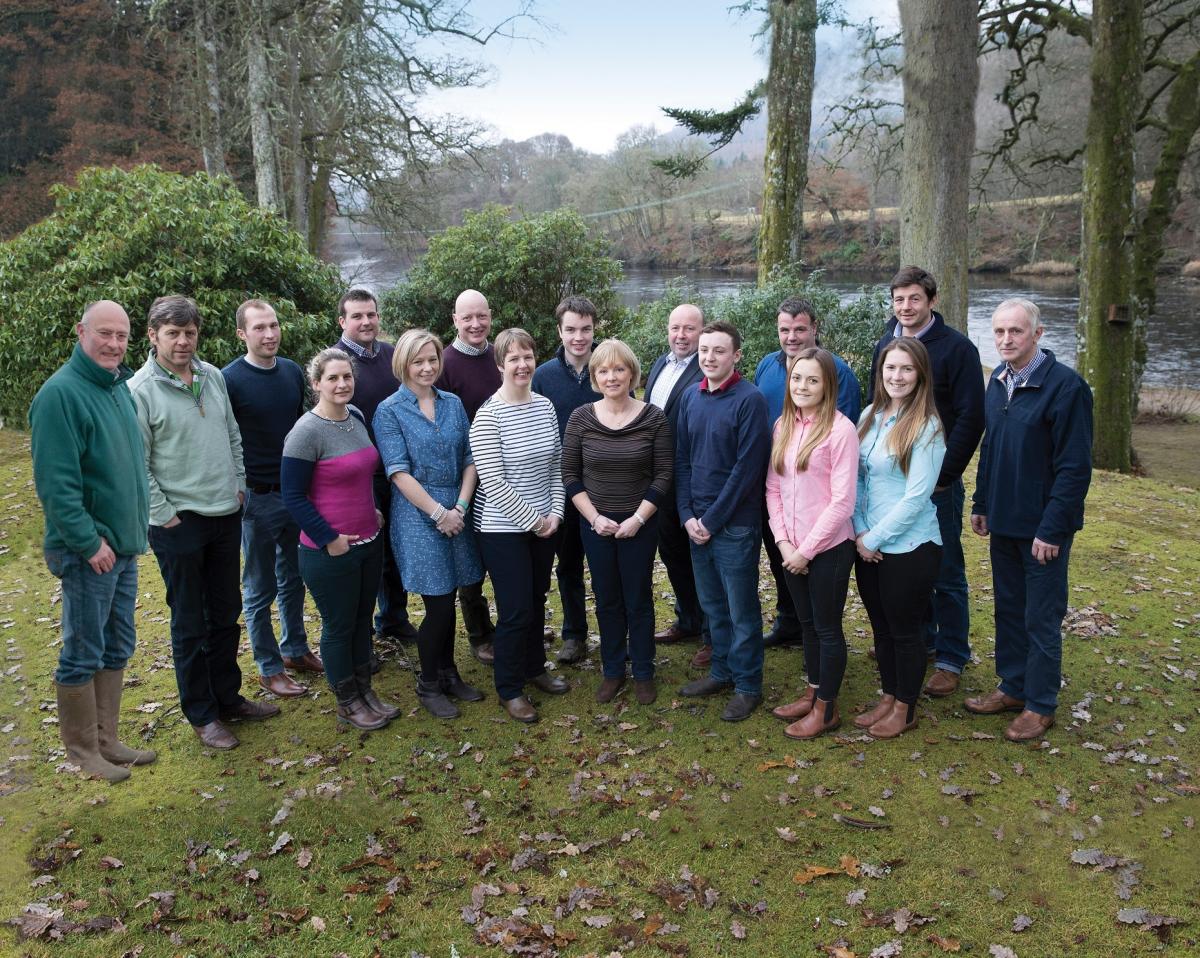OPTIMISING farming systems has emerged as the stand-out theme of the first year of the new Monitor Farm Scotland programme.
Nine monitor farms were established in Scotland over the last year, as part of a joint initiative by Quality Meat Scotland and AHDB Cereals and Oilseeds, with funding from the Scottish Government. Monitor farms can now be found in Nithsdale, the Scottish Borders, North Ayrshire, the Lothians, Angus, Lochaber, Morayshire, Sutherland and Shetland.
“It’s really heartening to see all our farms are making the most of this opportunity to ensure their enterprises are sustainable in the long-term,” said AHDB Cereals and Oilseeds knowledge exchange manager, Gavin Dick,
“Across the entire programme we are seeing practices reviewed and tightened up, both in arable and livestock, and all the farms have business groups which are benchmarking so they can compare both where they are performing strongly and also where they might be lagging behind.”
Many of the farms have focused on grass management, both in terms of grass quality and in the use of rotational grazing for both cattle and sheep. The Sutherland monitor farm is one of the farms which has tested the nutritional quality of the grass itself, rather than focusing solely on the soil.
Monitor farmer Victoria Ballantyne explained: “We are so reliant on our grass to provide almost everything our cattle and sheep need, we run a low input system with animal performance coming almost entirely from forage so we need our grass to be high quality. Soil testing is important, but we wanted to better understand what the animals were actually eating and how we could improve it.”
Like grassland, soils have also been an important element for all nine farms, with many carrying out work to improve the structure and nutrients in both pasture and arable soils, and many trying out the popular #soilmyundies experiment, burying cotton underpants and digging them up eight weeks later, when the level of degradation helps indicate the bioactivity of the surrounding soil.
Livestock management has also featured heavily this year, with many farms assessing diet and nutrition, handling facilities, health, weaning and fertility.
The Angus monitor farm is currently considering fairly major changes to its herd and has been reviewing its breed, calving system, selling store or fat and the benefits of AI versus natural service.
Monitor farmer Rob Stodart said: “I think 2018 will see changes to how we farm here at The Mill. We need to ensure we are working as efficiently as possible and we’re really open to new ideas and hearing other farmers’ experiences to help us decide the future of the herd.”
With such a plethora of farming issues up for debate and discussion, it is no surprise that the programme has attracted plenty of local interest; on average there are 53 attendees at each meeting, with some farmers travelling up to two hours to be there.
QMS head of industry development Doug Bell said that he believes that programmes like these provide vital support to farmers and growers building sustainable and productive businesses.
“Sharing information and best practice is at the heart of the programme. There is no doubt that the most effective knowledge exchange takes place between farmers. ‘Been there, done that’ experiences add credibility to messages which practical farmers really value,” said Mr Bell.
“The last 12 months have seen unprecedented levels of communication within and between the monitor farm community groups all with the common goal of improving the bottom line and long term sustainability,” he added.
Of course, becoming more productive and profitable is a key driver for many of the farmers and all nine Monitor Farms will be using the AHDB benchmarking system Farmbench over the coming months to better understand their figures and where they could make savings or add value.
Already the Borders monitor farm is looking at whether organic certification could provide a premium as well as the possibility of bringing deer onto the farm, while other farms are looking at more targeted use of fungicides and fertilisers, improving scanning percentages, use of genetics and undersowing barley with grass to ensure they are making the most of their land and their livestock.
As is often the case with these initiatives, the farmers are learning as much from other farmers as they learn from expert speakers, and indeed just bringing together the local farming community has big benefits, as Lochaber monitor farmer Chris Cameron said: “In the past we have kept ourselves to ourselves a bit, so it has been a big change having regular community group meetings, discussing our farm and how we do things openly, and being challenged to do things differently.
“But it’s been great, getting to know people, listening to their ideas and experiences – it is the best part of being a Monitor Farmer.”







Comments: Our rules
We want our comments to be a lively and valuable part of our community - a place where readers can debate and engage with the most important local issues. The ability to comment on our stories is a privilege, not a right, however, and that privilege may be withdrawn if it is abused or misused.
Please report any comments that break our rules.
Read the rules here